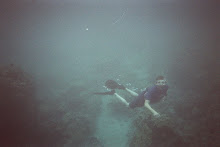There are differences in form between literary works--novels, short stories, poetry, and drama--and classic/standard non-fiction, sure, but the methodology of approach and comprehension--the reader's task--continues: to ascertain and analyze the facts and the visible signs of argument, emotion, and ethics.
Analysis:
identifying the parts and understanding the relationship between the parts and their relationship to the whole.
Understanding complexity (and not merely complication).
Answering the question, over and over again, for each part:
How does X contribute?
Creating--or encouraging--readers.
Enabling--and enobling--students?
What else?
Thursday, October 26, 2017
What Archilochos Said
"Greet insolence with outrage."
----------Archilochos,
one of those--his--fragments in Guy Davenport's translation from the Classical Greek.
What Archilochos Said:
four words that have worked well in class, provoking good discussions of diction, denotation, connotation, and character study.
So much in four words. Just think of what's said, what's signaled, with that choice of "greet" instead of "meet" or "match" or "return".
I must admit I have a qualm or two about the violence in the lines, but then we--our spirits, the collective consciousness--do need rousing in these times.
Sunday, October 22, 2017
Tuesday, October 10, 2017
Byronic Opposition
Byron's expressions of the heroic saliently focused on opposition figures--the Trojan view, Priam's sons, a Turkish infidel and his sons, a cripple--to express that heroism, a thought I'd misplaced from back in the days I was working on that dissertation.
(How odd, especially given that my intended and partially-unexamined title read "With a Trojan's Eye." I knew Byron was more cosmopolitan, more liberal, of mind and heart than many have given him credit for, but I wasn't quite digesting all that I'd been consuming, reading hugely as I was, and so . . . .)
Subscribe to:
Posts (Atom)





